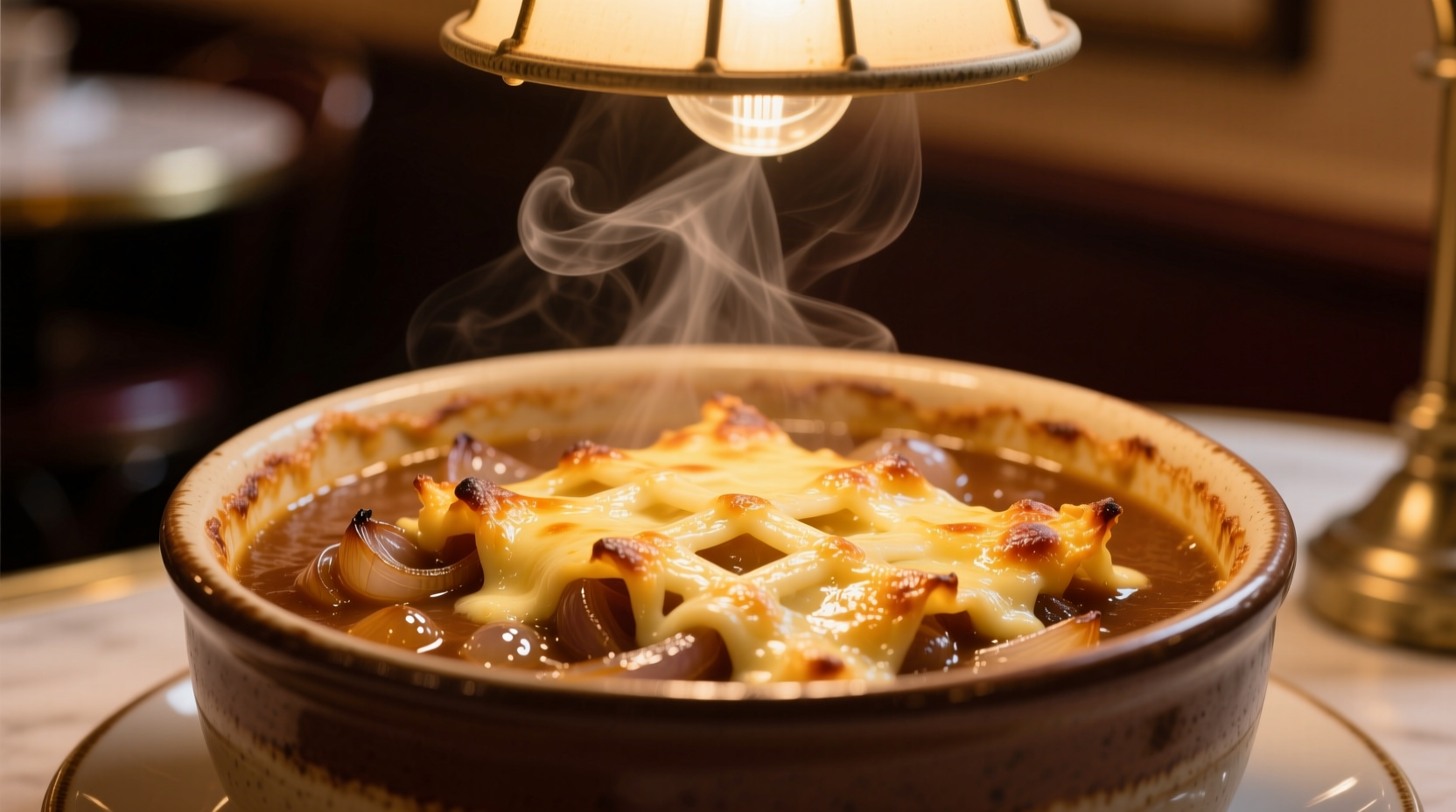Discover exactly why Gruyère reigns supreme in this classic French comfort food, when you might consider alternatives, and professional techniques for achieving that perfect golden-brown cheese crust every time. Whether you're preparing your first batch or refining your technique, this guide delivers the precise cheese knowledge you need for restaurant-quality French onion soup at home.
The Authentic Cheese Tradition Behind French Onion Soup
French onion soup (soupe à l'oignon) traces its origins to ancient Rome, but evolved into its modern form in 18th century Paris. According to Larousse Gastronomique, the definitive French culinary encyclopedia, Gruyère became the cheese of choice during the soup's refinement in French bistros of the 19th century.
Why Gruyère specifically? This Swiss cheese (ironically not French, but commonly used in French cuisine) offers the ideal balance of characteristics:
- Superior melting properties - creates a smooth, elastic layer without becoming greasy
- Complex flavor profile - nutty, slightly sweet notes that complement caramelized onions
- Perfect browning capability - develops that coveted golden crust when broiled
- Moisture content - high enough to melt beautifully but low enough to form a proper crust

Why Gruyère Outperforms Other Cheeses
Food science explains Gruyère's superiority for French onion soup. With a pH of approximately 5.2 and optimal moisture-to-fat ratio, Gruyère undergoes the Maillard reaction perfectly when broiled, creating complex flavor compounds while maintaining structural integrity.
According to research from the USDA Agricultural Research Service, Gruyère's protein structure allows it to stretch and bubble beautifully without separating - a critical quality when creating the signature cheese crust that defines proper French onion soup.
Cheese Comparison: Finding Your Perfect French Onion Soup Match
| Cheese Type | Melting Quality | Flavor Compatibility | Best Usage Scenario |
|---|---|---|---|
| Gruyère (AOP) | Excellent | Ideal | Authentic preparation, special occasions |
| Comté | Excellent | Excellent | Traditional French alternative |
| Emmental | Very Good | Good | When Gruyère unavailable |
| Mix (Gruyère + Parmesan) | Excellent | Superior | Enhanced flavor complexity |
| Generic "Swiss" | Fair | Fair | Emergency substitute only |
Professional Cheese Application Techniques
Even with perfect cheese selection, improper application can ruin your French onion soup. Follow these chef-recommended practices:
Grating Matters More Than You Think
Always use freshly grated cheese rather than pre-shredded varieties. The anti-caking agents in pre-shredded cheese prevent proper melting. For optimal results:
- Grate cheese just before use (maximum 30 minutes ahead)
- Use medium-coarse grating for best melting and browning
- Maintain cheese temperature below 50°F until application
The Two-Step Broiling Method
Professional kitchens use this technique for perfect cheese crusts:
- First broil: 2-3 minutes at medium heat to melt cheese completely
- Cool slightly: Allow soup to rest 30-60 seconds
- Second broil: 1-2 minutes at higher heat to develop golden crust
This two-stage process prevents the common problem of burnt cheese with unmelted pockets underneath.
Cheese Blending Secrets from French Bistros
While traditional recipes call for pure Gruyère, many Parisian bistros now use strategic blends to enhance complexity. The most respected technique combines:
- 70% Gruyère for optimal melting and classic flavor
- 25% Comté for nuttier depth (aged 12-18 months)
- 5% finely grated Parmesan for umami boost
This blend maintains Gruyère's essential melting properties while adding subtle complexity that elevates the entire soup experience. The small Parmesan addition creates additional Maillard reaction compounds during broiling, enhancing the crust's flavor profile without compromising texture.
Avoiding Common Cheese Mistakes
Even experienced home cooks make these critical errors:
- Using low-moisture mozzarella - creates rubbery texture that doesn't brown properly
- Adding cheese to boiling soup - causes premature melting and poor crust formation
- Using insufficient cheese - should completely cover surface with 1/4-1/2 inch layer
- Broiling too close to element - burns before proper melting occurs
Remember that French onion soup's cheese topping isn't merely garnish - it's an essential structural and flavor component that transforms the dish from soup to culinary experience.











 浙公网安备
33010002000092号
浙公网安备
33010002000092号 浙B2-20120091-4
浙B2-20120091-4